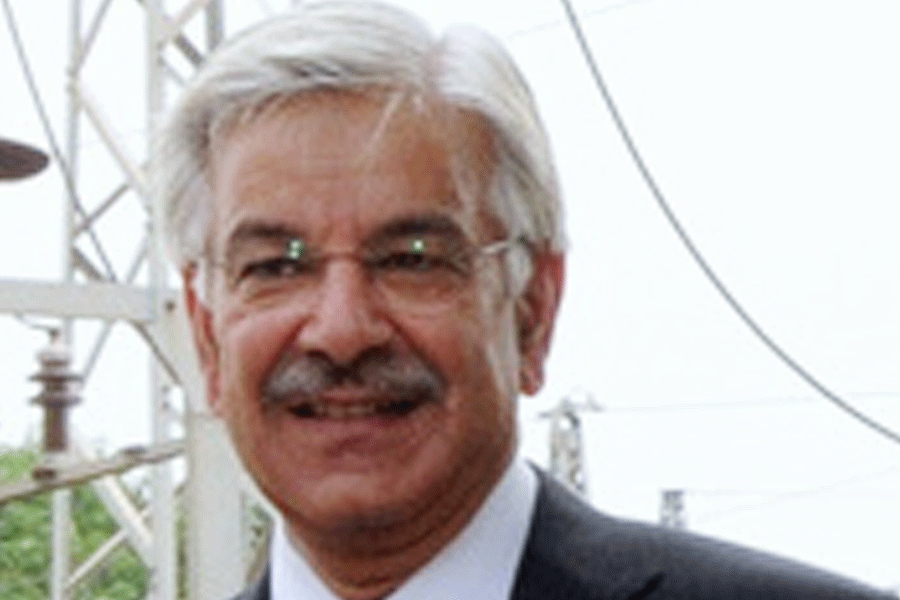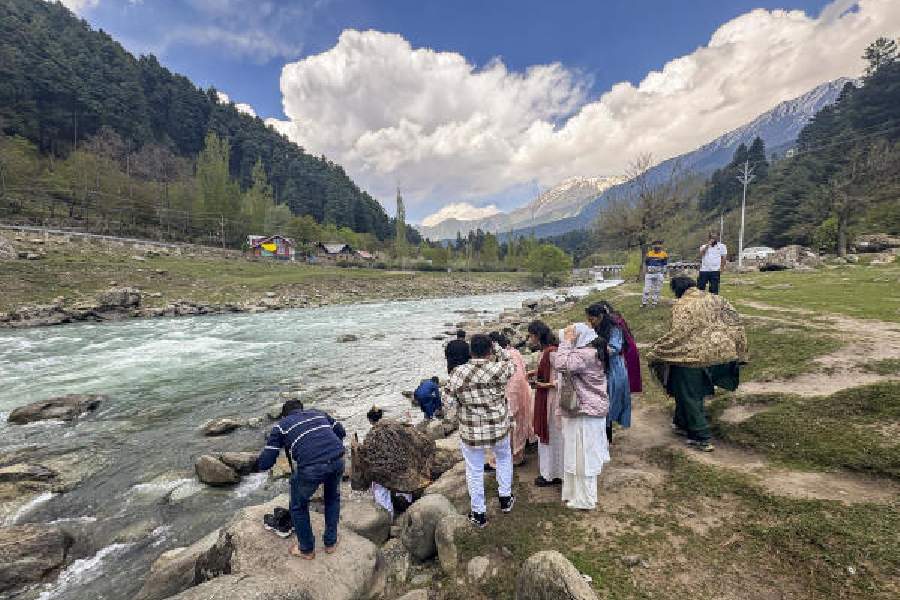 |
| ‘When Rabindranath Tagore first saw Manipuri dance in Tripura, he was so impressed that he became determined to popularise this dance form in the other parts of the country.’ Picture by S.H. Patgiri |
A small community, with their unique and distinctive cultural heritage, living in the remote eastern corner of India, surrounded by hills, is perhaps not very familiar with the people outside the Northeast. However, the world outside has been fascinated by this little hill state of Manipur. Enamoured by the natural beauty of the state, Pandit Jawaharlal Nehru once said Manipur is really a “jewel state” of India (mani meaning jewel). The aerial view of Manipur during World War II prompted the Japanese to describe the state as “a flower on a lofty mountain”.
Culture may be termed as a way of life for the people, incorporating fundamental values, which are expressed through art, religion, social institutions and behaviour. Since culture is a continuous process of reinterpretation and adaptation, the present Manipuri culture is the synthesis of ritualistic tradition of pre-Hindu and the post era of Vaishnav religion.
The mother of all Manipuri dances is Lai Haraoba. Lai, meaning creator and Haraoba, meaning merry-making, are linked to myths of creation of Manipur.
Legend says how Manipur had been created when the land was under water. Nine Lapumingthou (gods) and seven Lainuras (goddesses) came down from heaven and threw soil into the water from the hills and thus Manipur was created. Lord Nongpokningthou (Shiva) and Panthoibi (Parvati) descended on it and performed the Lai Haraoba dance.
In the field of culture too, Manipur has a distinct quality of reorientation of any style into their own form such as Basant Ras, Pung Cholom (drum dance), Thang Ta (martial arts) and conch-blowing. The sound of conches blowing in Manipuri is so fascinating that even at the Festival of India in Moscow, the conch-blowers got warm appreciation of the people there and the Soviet government permitted them to tour the different places to show their art. The internationally-reputed Basant Ras, known as the “youngest” among the classical dances of India, reveals the richness of Manipuri culture.
This dance style is the manifestation of rich ritualistic tradition, combined with deep devotion of the Vaishnav Bhakti cult. Unlike the other dances of India, Manipuri dance is soft, with measured rhythmic movements, without much movement of eyes and other parts of the body.
Till the beginning of the 20th century, the Manipuri dance was not popular outside the Northeast. When Rabindranath Tagore first saw the Manipuri dance in Tripura, he was so impressed that he became determined to popularise this dance form in the other parts of the country. In recognition of this exquisite dance style, Tagore had even opened a separate branch for Manipuri dance course in Vishva Bharati in Santiniketan.
Among the folk dances, the expression of keenest and collective rejoicing is Thabal Chongba, which literally means “moonlight jump”. This dance form is exclusively for the youths, both boys and girls, performed during Holi in the moonlight. The youths of the villages assemble in hundreds for this dance. They form a ring with boys and girls, hold hands and dance in circles to the rhythm of music.
Holi, the festival of colours is known in Manipur as Yaosang, meaning “shed of sheep”. It is observed during full moon of Lamda (March), the birthday of Sri Chaitanya, the founder of Vaishnav Bhakti cult. A small shed of bamboo and thatch is built and the idol of Sri Chaitanya is worshipped in the evening. After being worshipped, the idol is removed and the shed is set on fire, and the festival begins. It is also believed that the celebration of the festival is to commemorate the killing of Metrasura, a sheep demon, by child Krishna.
Traditionally, the festival is celebrated for five days, but it continues for a month. During the first five days of Yaosang, normal activities nearly come to a standstill as the festive spirit reaches fever pitch.
Manipuris are a deeply religious people. In recognition of the Vaishnav Bhakti the youths put tilak on their forehead and nose. The basil plant, found in the courtyards of every Manipuri household, is worshipped. Every ceremony and almost all aspects of day-to-day life of the Manipuris has a religio-cultural orientation. For instance, the marriage ceremony in Manipuri community is solemnised strictly through religio-traditional way. Men wear spotless white dhoti and kurta and women wear colourful traditional dresses, comprising the phanek — a cloth covered from waist to feet, a blouse and inaphi — like a short saree draped across the shoulder.
When the bridegroom’s party starts for the bride’s house, the venue of marriage, the leader of the party is called lei chandan puba, the person who carries flower and sandalwood paste, followed by lai pot pubi, women carrying fruits, flowers, betelnut as offerings to God. It is a normal practice that the lai pot pubi are selected from among the groom’s relatives, whose first offspring is preferably a male. She should not be a widow. At the venue of the marriage, there is an arrangement of Hari Sangkirtan in praise of Krishna and his eternal love of Radha and Gopis.
The Hari Sangkirtan organised as a substitute of “scared sacrificial fire” (yajna), because Manipuris believe Hari Sangkirtan is supreme and everything can be attained by Harinam. With Hari Sangkirtan on one side and chanting of mantra with necessary rituals on the other, the panditji ties the nuptial knot. The main marriage ceremony is completed with the bride and groom exchanging garlands amid the chanting of Hari Sangkirtan.
Legends mention that Manipuri women are skilled in a variety of handlooms. From the days of yore, handloom was their main source of income. Manipuri women excel in weaving and embroidery. They are hard-working and are respected in society. Visitors from outside the Northeast will really enjoy the Khwairamband market in Imphal, the biggest market run by women traders. The tireless and jolly Manipuri women, carrying a heavy load on their heads, is a sight to marvel at.
But how many of us remember this “jewel state”, Manipur, the territory of India which was first liberated from the British colonialism during the World War II, by hoisting the INA flag at the historic Moirang about 30 km from Imphal? Unfortunately, we are not keen to know about the culture and social system of one another. India is a land of unity in diversity and we should try to make some effort to exchange our diverse cultures and develop the bond of universal brotherhood.










